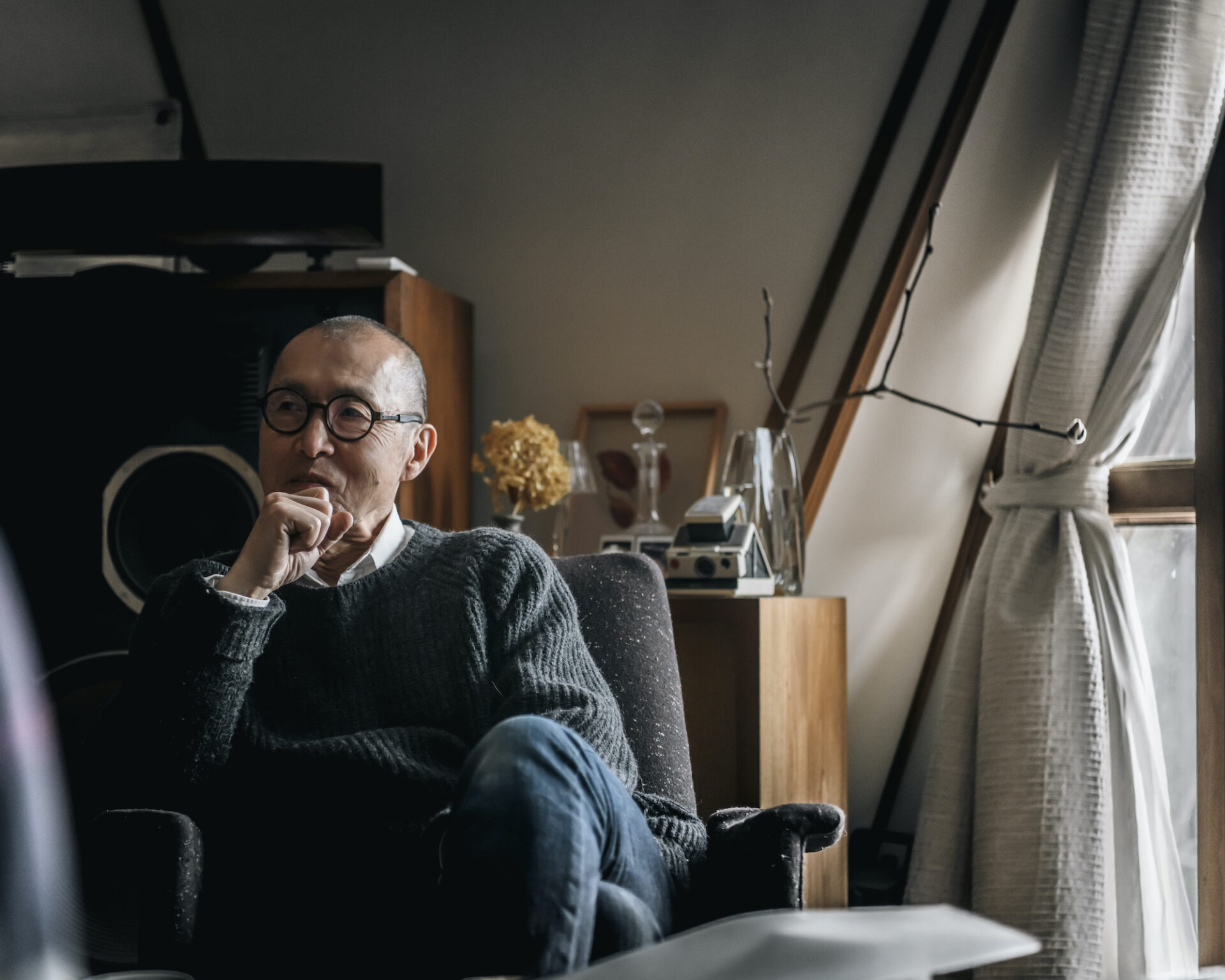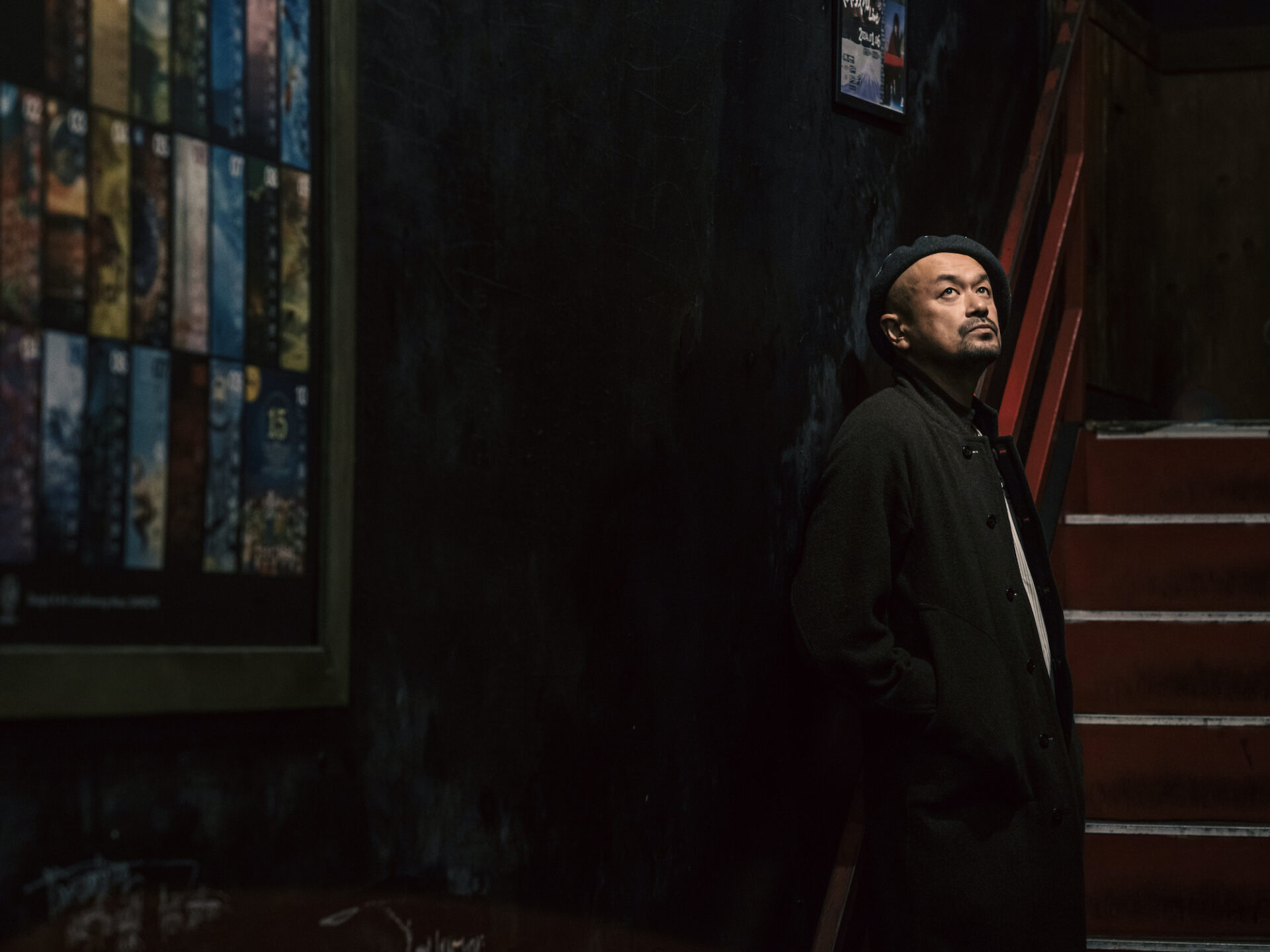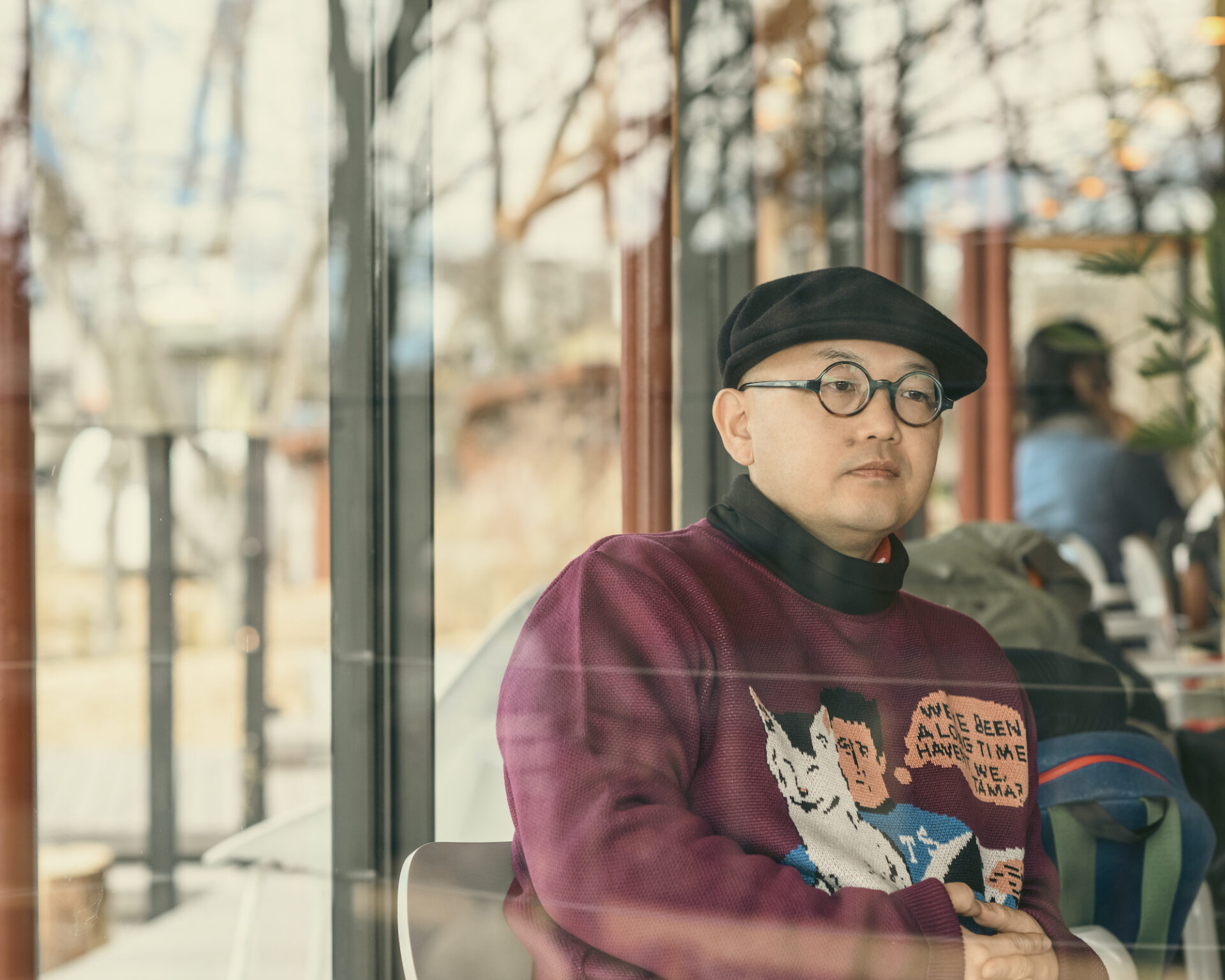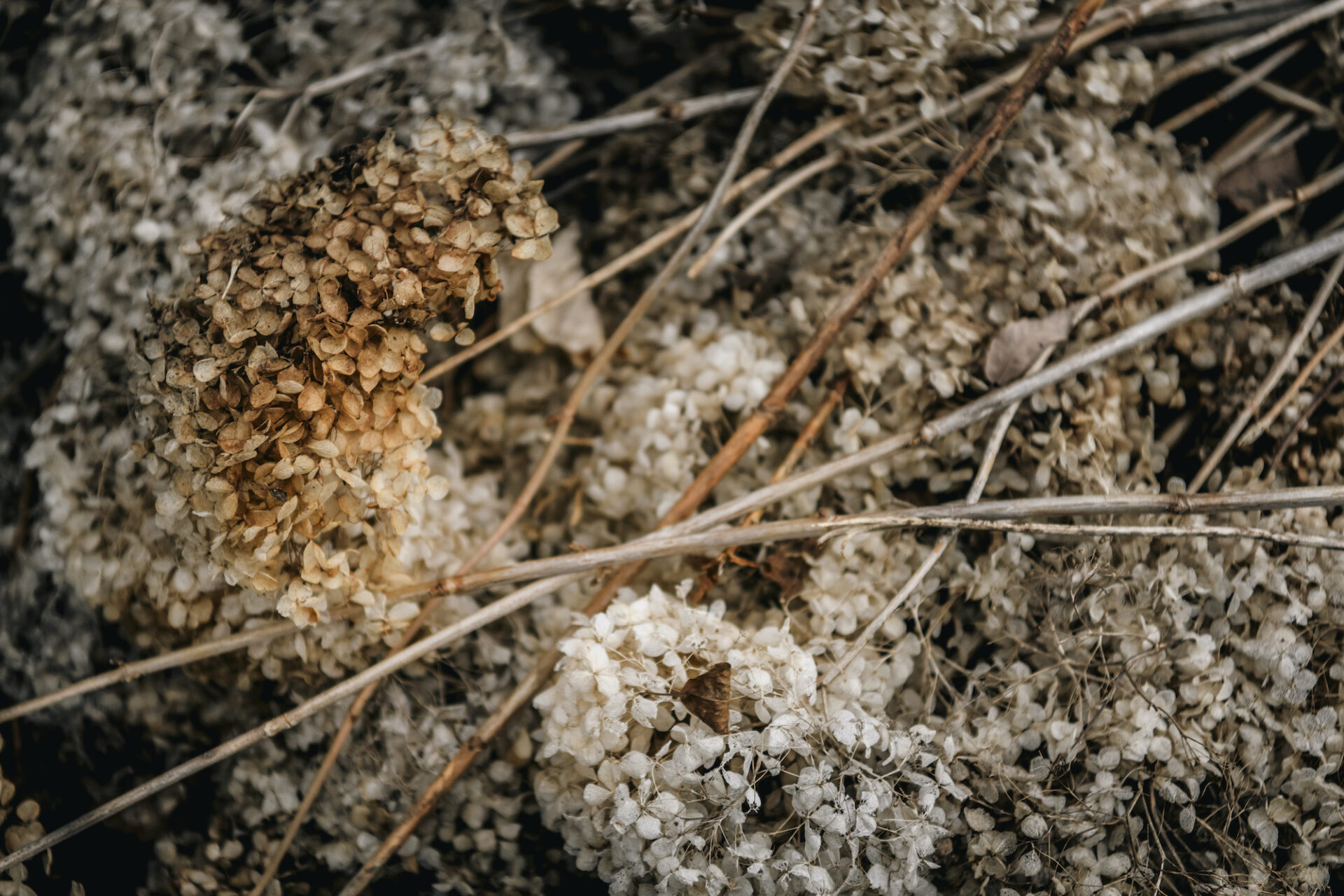
2025-05-15
Vol.17
Photographer
Mikio Hasui(part 1)
-
The Broken is More Beautiful
-
What Remains in the End
-
Record Things As They Are
-
Spreading Empathy for the Sense of Transience
In January 2024, a massive earthquake struck the Noto region of Ishikawa Prefecture. The damage was enormous, claiming many lives, destroying homes, and damaging many valuable cultural treasures created in the area. While many tried to repair the broken objects using the traditional Japanese technique called “Kintsugi,” or to transform them into new creations, photographer Mikio Hasui turned his lens on the “phenomenon” itself, seeing the beauty in the broken pieces and trying to record them “as they are.” How was his series of photographs, which reflect the competing relationship between nature and humans while exuding a sense of calm and tension, created? OSAJI brand founder Masakazu Shigeta visited Mr. Hasui’s studio in Chino City, Nagano, to talk about how the works were created and his thoughts behind the exhibition title, “Beauty Dwells Even in the End of Decay.”
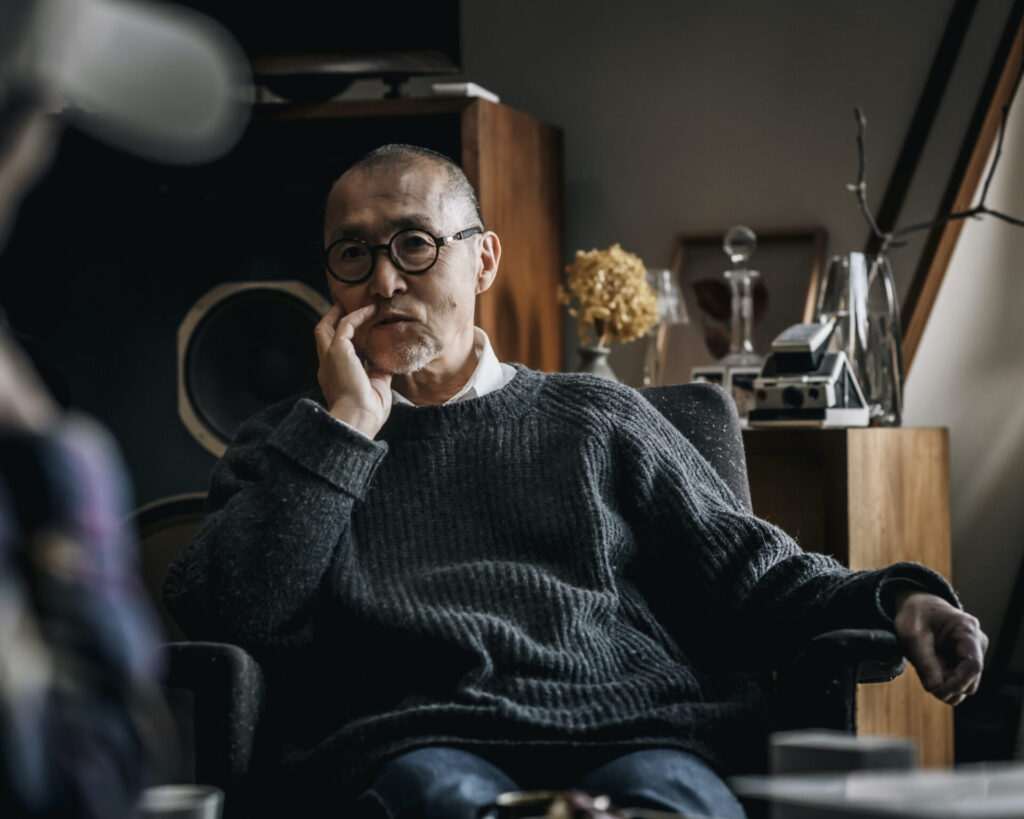
“I saw beauty in the broken pottery and wares as a ‘phenomenon.'” (Hasui)
——How many times have you met each other?
Mikio Hasui: If my memory is correct, we first met at the Kinzangama Kiln in Ishikawa. After that, we once met at Kamakura, and he came to my solo exhibition the other day, so this is the fourth time.
——The solo exhibition is titled “Beauty Dwells Even in the End of Decay,” featuring photographs of Kinzangama Kiln potteries and wares, which were broken during the Noto earthquake.
Hasui: That is right.
——You also plan to have a traveling exhibition in Komatu in May. What made you decide to take photos of potteries and wares broken by the earthquake?
Hasui: It’s a long story, but it all started 14 years ago when we experienced the Great East Japan Earthquake. At the time, I made every effort to support the disaster area. I reached out to acquaintances in the advertising industry to gather essential items, loaded them into the cars, and delivered them to the disaster victims. After the situation had settled down to some extent, I visited the evacuation centers and took photos of their smiles, and made postcards on the spot. I also held a workshop for children with the World Cup-winning Japan women’s national football team.
Through the relief effort, what I strongly felt was human resilience- the determination to live with a smile despite facing the fragility of life and civilization that can be lost in an instant. The scene has been burned into my memory ever since. So, when I heard a major earthquake occurred in Noto, I immediately called Mr. Yukio Yoshita of the Kinzangama Kiln, whom I had known for four or five years, to ask about the situation on the ground.
That being said, I initially thought the damage in Komatsu was not so severe. Mr. Yoshita also told me that his family and the people around there were OK, but then he said many of his predecessors’ works were severely damaged. When I asked what he was going to do with them, he said he was at a loss because, although many people gave offers and proposals for restoration, it is not that simple – just restoring them to their original state is not enough. Hearing that, I blurted out, “Can I take photos of them?”
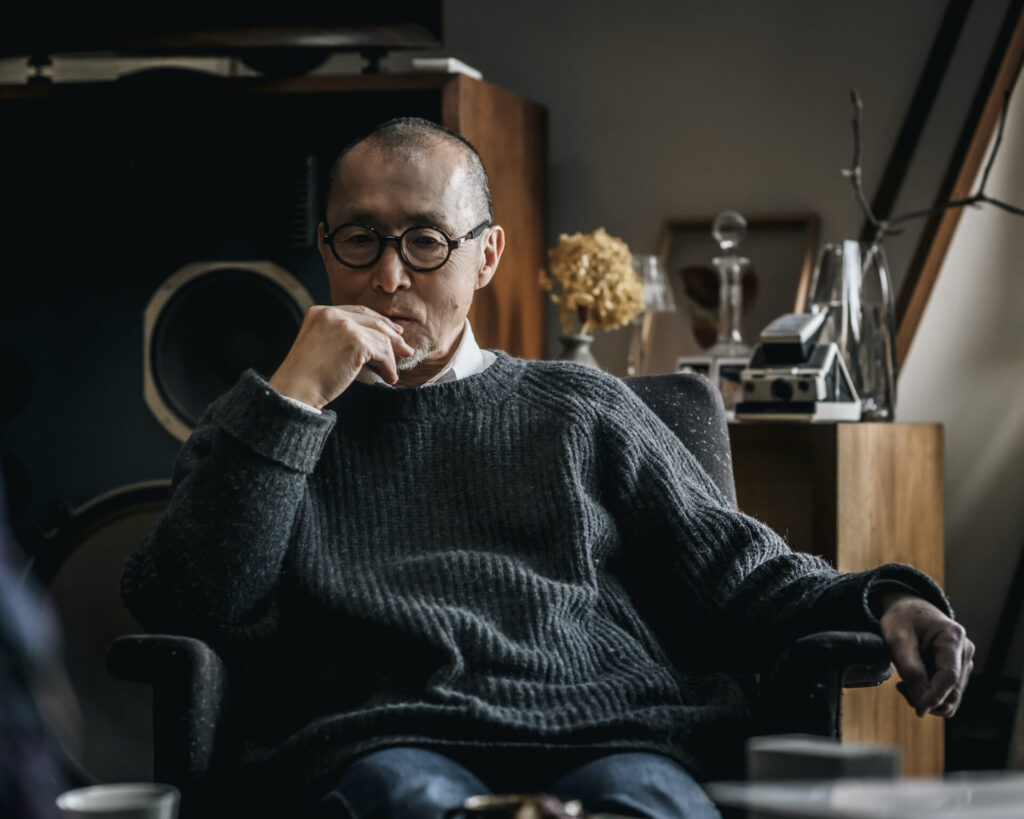
——What was Mr. Yoshita’s reaction?
Hasui: He said, “That’s it! Let’s do it!” without asking my motives, and then he entrusted me with the broken items. Talking with him on the phone, I had a vague image in my mind, but when I physically looked at them through the finder, it was far more beautiful than I had imagined. I know it is rude to Mr. Yoshita, but I even thought being broken could be more beautiful. Of course, being intact is more beautiful when we view them as products or artworks. However, I saw beauty in the broken pottery and wares as a “phenomenon.”
Everything breaks or is destroyed in the end. However, genuine works continue to have the passion and energy of their creators even after they are destroyed. All of the broken pieces from the Kinzangama Kiln had a presence as if they were born broken. Through the process of photographing them, I suddenly came up with the title of the exhibition, “Beauty Dwells Even in the End of Decay.”
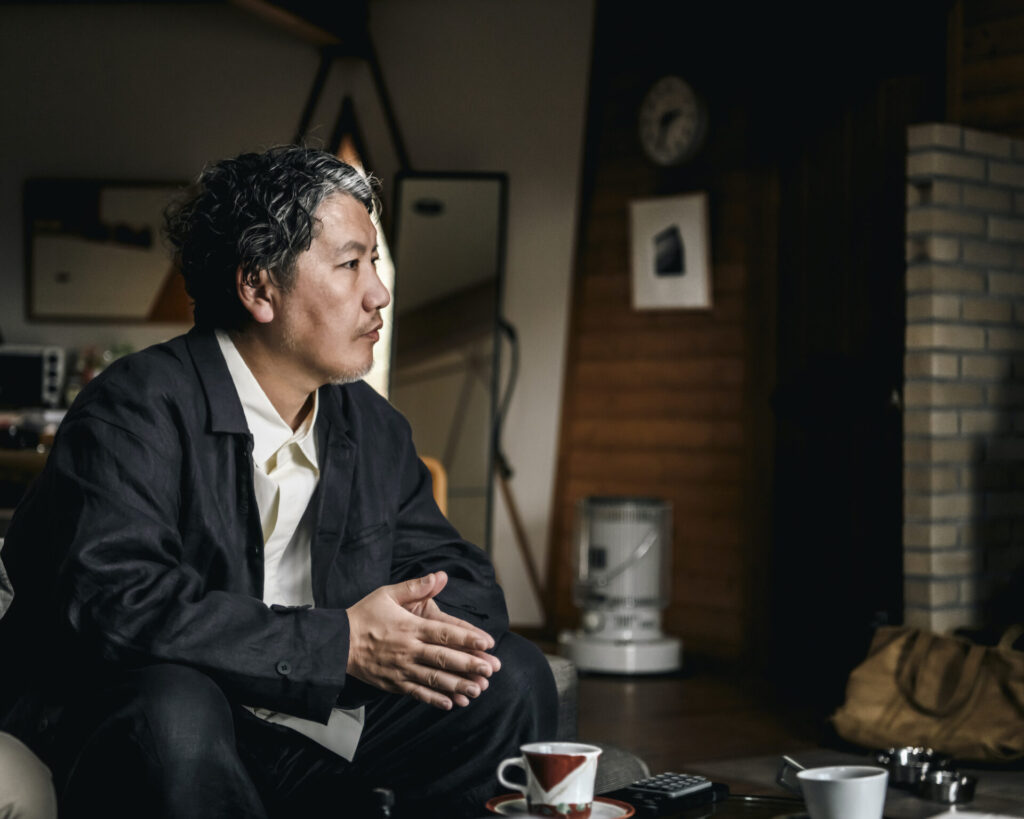
“I was deeply moved by Mr. Hasui’s words, ‘People are on the way to losing things from the moment they are born, and what remains in the end is love.'” (Shigeta)
——Did you have any intention to support the restoration effort by photographing?
Hasui: No, not at all. But since the work would sell, I thought it would be better to use it for support. In that way, I thought people who bought the works would also feel like they had participated in the support. So, I proposed to Mr. Hiroaki Hayashida of Yugen Gallery to make it a support program. He immediately agreed and allowed us to put donation boxes in the exhibition. I thought collecting a small amount was fine, but in the end, we received more than we expected. I am also planning to donate 30% of the sales to Noto.
——You said you saw an indescribable beauty in the pieces broken by unpredictable forces of nature. Can we say that this is a collaboration between the creators and nature?
Hasui: I don’t think so. Collaboration has its goal for the first time. It only begins when we have a shared goal. In this case, there was no goal, and it was purely a product of chance. If I had to use the word “collaboration,” it would have been between the Kinzangama Kiln and me.
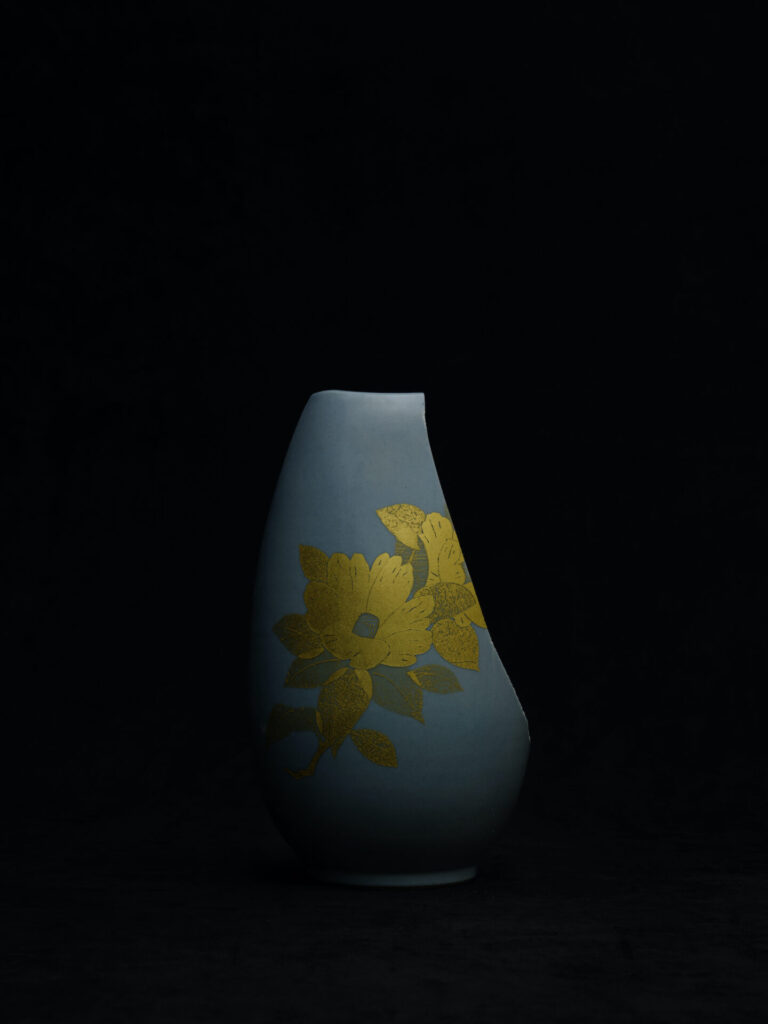
——Mr. Shigeta, you saw the photographs taken by Mr. Hasui at the exhibition. What was your impression?
Masakazu Shigeta: I was deeply moved by his words, “People are on the way to losing things from the moment they are born, and what remains in the end is love.” I saw it posted on the gallery’s wall and talked about it with him. That is what gave me the strongest impression. So today, I want to hear about the thoughts behind the words.
Hasui: Actually, I got COVID-19 last summer. I underwent a detailed examination and was diagnosed with COPD (Chronic Obstructive Pulmonary Disease). I had never heard of it before, and the doctor explained that it is a disease caused by the destruction of alveoli, making it difficult to take in oxygen. It is a progressive disease that medicine doesn’t cure. The doctor told me that it was a symptom of aging, but I felt it was too early for me to get older. I want to live at least another 10 years until I turn 80, so I started going to the gym to take care of my health and train my body.
I mainly do cardio exercises at the gym, and my physical condition has improved day by day, making me feel much better. But I stopped and thought: everyone eventually dies. If there were someone who didn’t die, it might make me curse my misfortune, wondering why it is only me. But that is not the case: everyone dies equally and inevitably returns to nothing. Thinking about things like that, I looked at the broken pieces of the Kinzangama Kiln and realized I was in the same situation. Even if you repair them by gathering broken parts, the potteries and wares will never return to their original state. The same is true for humans. Then, I thought about what remains in the end and realized that it must be “to love others and be loved by them,” and that is all there is.

“Beauty is accepting the existence of things and having the determination to accept their whole existence.” (Hasui)
Hasui: While photographing the broken pieces, I once tried arranging flowers in them. The reason behind that was that I wanted to symbolically convey the idea that there would be new life sprouting again, even if an earthquake destroyed a city. When I did that, it was actually beautiful as a photo, but I felt something was out of place. I felt a sort of artificial and made-up beauty, and its original purity got lost. I realized once again that accepting them as they were would be better as a photo.
I know this because I have worked as a commercial photographer for many years, but you can take good photos if you try. Essentially, however, the photograph is supposed to be recording the light in the place as it is. The essence of photography- recording things as they are- is always the same, whether it is film or digital. Then, rather than arranging flowers or adding unnecessary lighting, I thought it would be better to accept their existence by simply placing them in front of a black background. That is how I took the photo this time. When you seriously pursue the value and the meaning of work, you reach the world of Zen in the end. They are also connected with the Japanese aesthetics of silence and minimalism. Beauty is accepting the existence of things and having the determination to accept their whole existence- that is what I learned through creating this work.

——In the words Mr. Shigeta just quoted, it also says, “For me, it will become what we call love, and then it will be clothed with beauty for the first time.” How does love turn into beauty?
Hasui: All matter is beautiful in the first place. Data is not beautiful because it does not exist as matter. The same is true for photographs. If you take photographs digitally, you can instantly check them on your PC, but they are just not beautiful. It obtains true beauty only when you print it out. Inkjet printing also uses ink, but compared with analog printing, where the paper and silver particles intertwine, the paper and ink are not intertwined. There is no muddy strength made by materials intertwining with each other.
I have always preferred to develop photos in a darkroom, but this time I used a digital camera and an inkjet printer due to the limitations of the venue. But actually, I also used a 4×5 analog camera. I will develop them when I have time, and once I have done it, I will take them to places like Germany to have an exhibition. There is a pottery like this in Japan, and there are works by a Living National Treasure, Mr. Minori Yoshita, but an earthquake broke them, and I photographed the broken pieces- I want to share my thoughts that it is a Japanese beauty.
——That exactly summarizes the exhibition’s title, “Beauty Dwells Even in the End of Decay.”
Hasui: Perhaps it does.
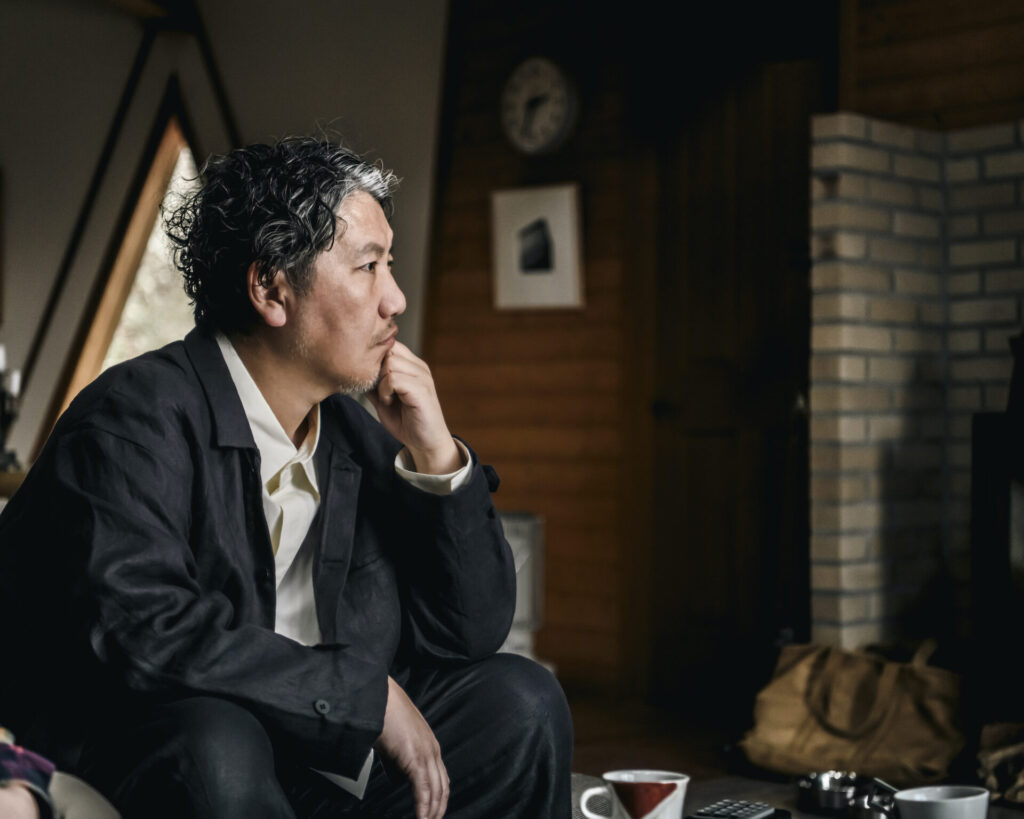
“Japanese anime and Vocaloids are appreciated all over the world because the worldview they portray is sad.” (Shigeta)
——In the world of Japanese tea ceremonies, for example, people see the tea set not only as a tool but as something that gets rusty as they use it, and they see a sense of beauty in the phenomenon.
Hasui: I think Japanese people are romantic at heart. That is why we see beauty in sadness, loneliness, and transience. People in foreign countries are also romantic, but their sensibilities are a bit different. It must be in Japanese DNA to see beauty in something that is broken and fades away. To endure, persevere, and suppress one’s feelings is similar to the idea of Zen.
——Mr. Shigeta, what Mr.Hasui just mentioned resonates with what you always embrace in your heart.
Shigeta: I think so, too. I think Japanese anime and Vocaloids are appreciated all over the world because the worldview they portray is sad. I feel an indescribable sense of transitoriness in the story and lyrics. We often see people with minority characteristics or beliefs participate in demo parades to seek social understanding in Western countries, but the number of people who can take such actions is limited in the world. The overwhelming majority of people are those who can not speak out and struggle with how to confront society. I think that is the difference between Western aesthetics, which pours light in every direction, and Eastern aesthetics, including that of Japan. I believe those who empathize with the worldview of transitoriness are more on the silent majority side of the world. The Western idea that everyone should be bright, joyful, and happy is that of the loud majority. I think that is why the interest in Japanese aesthetics is spreading rapidly around the world.
Then, I want to ask what Mr. Hasui thinks about the creativity of the young generation. You said, “There is love beyond decay and loss, where you see beauty,” but I assume you must have had a different way of thinking when you were young. I would rather think you were unhappy if you reached that state of mind when you were young. I want young people to have more experience that can only be obtained by placing themselves in chaotic situations.
Hasui: I marvel at the creativity of young people these days. I can never do something they do. I feel a great sense of hope because I think they continue to create new beauty through anime, Vocaloid, and generative AI. However, if you ask whether their work will move my heart, that is not the case. It is not a matter of the generation gap, but there is nothing that satisfies my anxiety and fear.
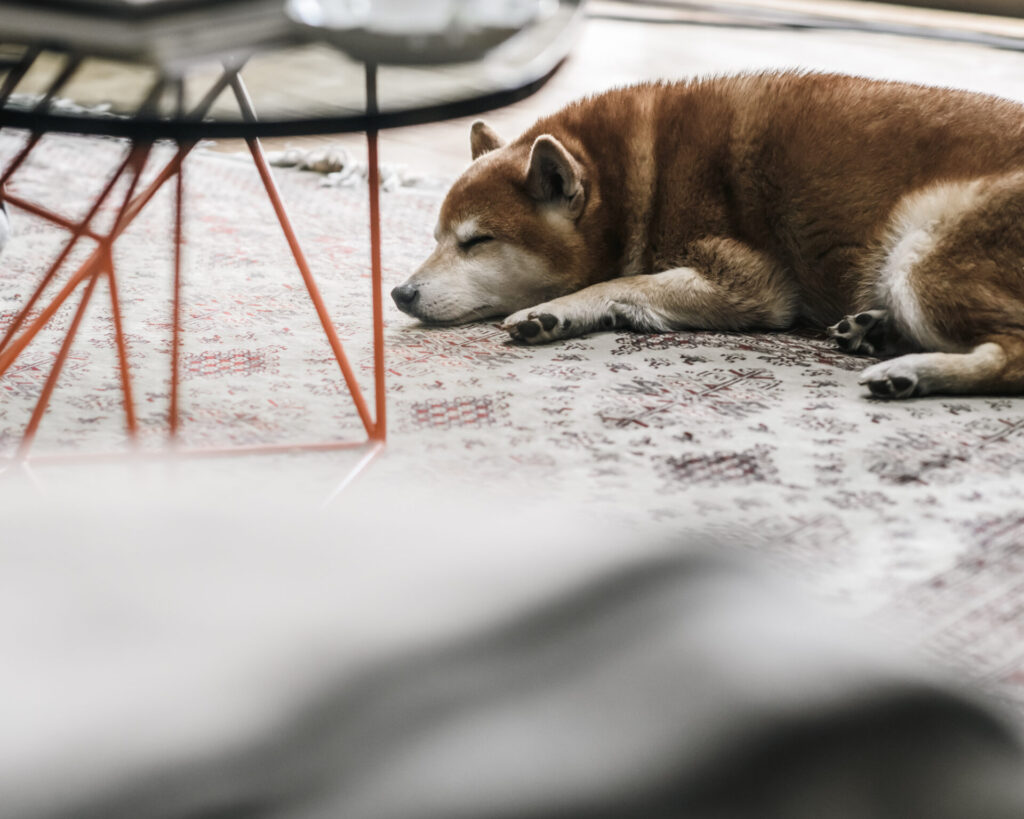
——Is what satisfies your anxiety and fear the “love” you mentioned?
Hasui: I imagined that if a doctor told me I had only about ten years to live, what would satisfy my heart? I think it must be having someone there for you who is always kind and smiling. At the same time, I want to try my best to keep the person always smiling. If I can do that, I will not suffer when I meet death.
Even if today is the last day of my life, or maybe tomorrow, wouldn’t you feel happy if your partner is smiling next to you? That is what it means to be filled with love. Then, how did I reach the idea? After all, I experienced many hard times where my heart was torn apart as if stabbed with a knife. I often blamed myself for hurting others so badly. All those regrets repeatedly stab me in the heart, and that makes me realize how small I am as a human being.
Love is, after all, how seriously you can think about something other than yourself, and that is not what you expect in return. You should not believe that you should be loved by someone just because you love the person so much. It is only when you can love something other than yourself that you are motivated to keep going and try a little harder. Then, what are you striving for? I am no longer interested in doing things for myself, and I want to contribute to society and dedicate myself to people who will see my photos one day. Those feelings make me feel brighter and help me forget about my illness.
(to be continued to the second half)
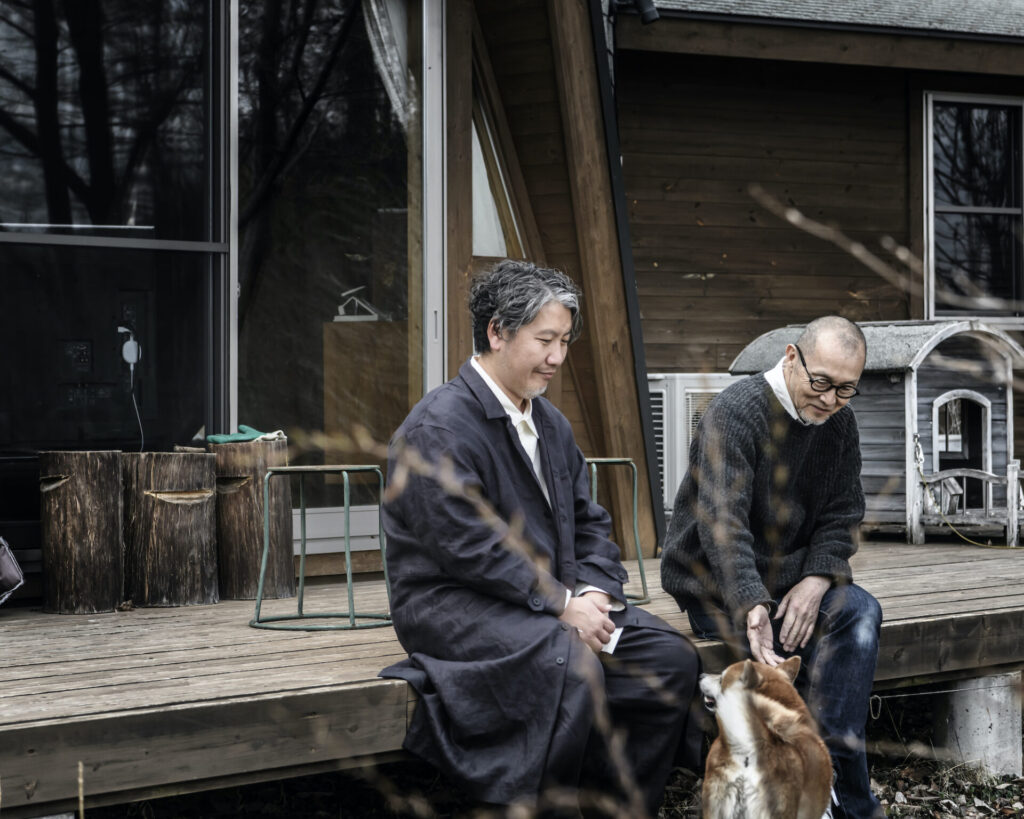
Notes:
The Kinzangama Kiln
Located in Komatsu, Ishikawa, this Kutani ware kiln boasts a long history of over 110 years. The kiln is credited with its traditional techniques called “Saisyoku Kinrande,” or the combined style of over-glazed paintings with Western paints and gold decorations, and painting with gold, passed down from the first generation. Minori Yoshita, the third-generation head, was designated as a Living National Treasure of Japan for his techniques called “Yuri Kinsai,” or a gold leaf application technique. Currently, the fourth-generation Yukio Yoshita continues to pass down the traditional techniques while pursuing new expressions. In 2019, the kiln opened a gallery space, “Mutan,” to propose a lifestyle with Kutani wares.
Mikio Hasui’s Statement for the Exhibition: “Beauty Dwells Even in the End of Decay”
From the moment we are born, we embark on a journey of constant loss.
We are always losing something, always having something broken, and we ourselves are eroding our hearts.
When we meet the end, what will these losses mean to us?
For me, it will become what we call love, and then, it will be clothed with beauty for the first time.
Profile
-
Mikio Hasui
Born in Tokyo in 1955, Hasui began studying photography independently in 1984. After working as an art director, he started his career as a photographer following a solo exhibition in 1988. He attracted attention for his portrait works of famous people, including his work in the magazine called “03” published by Shinchosha. “PEACE LAND,” a series of photographs taken since the 1990s, is a collection of works that form the core of his worldview. He has continuously presented his new works for this collection through publications, and it was added to the collection of the Bibliothèque nationale de France in 2009. Since around 2000, he has expanded his activity to video and created many PVs and commercials, involved in direction, shooting, and editing. He currently runs a photo studio called “Photo Studio Next to the Forest” in Chino, Nagano, and continues artistic activities in Tokyo and Nagano. He also actively engages in lectures and photography workshops for children, capitalizing on his own experience.
Major Awards
Spikes Asia Silver Spike(THERMOS, 2017)
67th Nikkei Advertisement Awards(Cabinet Office, Government Of Japan, 2018)
APA AWARD2019 Beautiful Japan(THERMOS, 2019)https://mikiohasui.com -
Masakazu Shigeta
After working as an engineer in the music industry, Shigeta began his career as a cosmetics developer in 2001. From 2004, he worked on various cosmetics brands in the healthcare business of Nitto Denka Kogyo Co., Ltd., a metal surface treatment company founded by his great-grandfather. In 2017, he founded “OSAJI,” a skincare lifestyle brand, and became its brand director. In 2021, as a new store of “OSAJI,” he produced “kako,” a specialized shop for home fragrances and perfume in Kuramae, Tokyo. In the following year, he opened a combined shop of “OSAJI,” “kako,” and a restaurant, “enso,” in Kamakura, Kanagawa. In 2023, utilizing the technical skill of Nitto Denka Kogyo, he launched a pottery brand, “HEGE,” and in October of the same year, he became CEO of OSAJI Inc. He also has published books on beauty and held cooking classes and events focusing on food, which is the origin of beauty. He released a collaborative album with F.I.B JOURNAL called “Gensho hyphenated” in November 2024 and has been expanding the range of activities.
Publications
Taberu Biyou (Eating for Beauty) (SHUFU TO SEIKATSU SHA, 2024)
42-Sai ni Nattara Yameru Biyou, Hajimeru Biyou (Beauty cares to quit and start when you turn 42) (Takarajimasha, 2022)
Information
Exhibition
Beauty Dwells Even in the End of Decay
A photo exhibition by Mr. Hasui, featuring the photographs of national treasure-class potteries and wares from the Kinzangama Kiln damaged by the Noto earthquake. A portion of the sales of the 17 newly photographed pieces was donated to the restoration support. The exhibition was held at YUGEN Gallery TOKYO from January to February 2025, traveled to YUGEN Gallery FUKUOKA in March, and will travel to MUTAN in Komatsu, Ishikawa, from May 17 to 31.
17 portraits of the Sea
A solo exhibition by Mr. Hasui, scheduled to be held at YUGEN Gallery TOKYO from June 7 to 25, 2025. The photographs capture the coastal landscapes near nuclear power plants such as Tsuruga, Kashiwazaki, Hamaoka, Tomari, and Onagawa. The works reflect his thoughts that people should pay attention to the existence of boundaries that must not be crossed in the pursuit of comfort and convenience.
-
Photographs:Eisuke Komatsubara
-
Text:Masahiro Kamijo
NEWS LETTER
理想論 最新記事の
更新情報をお届けします
ご登録はこちら
ご登録はこちら
メールアドレス
ご登録ありがとうございます。
ご登録確認メールをお送りいたします。
